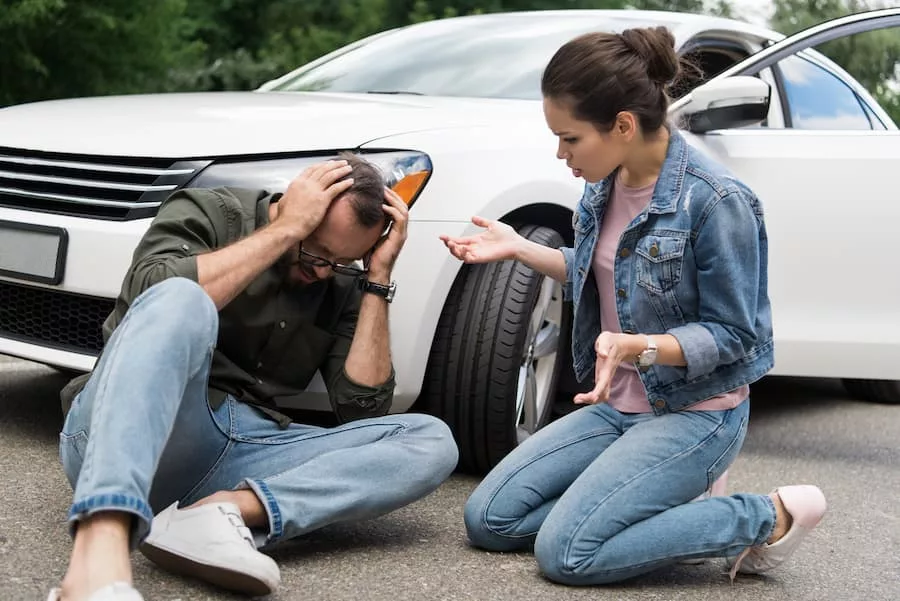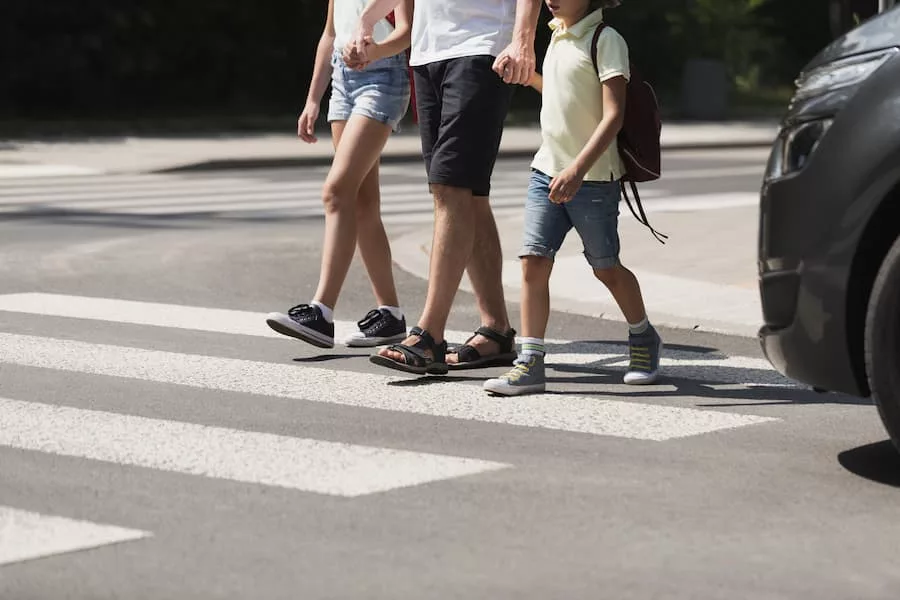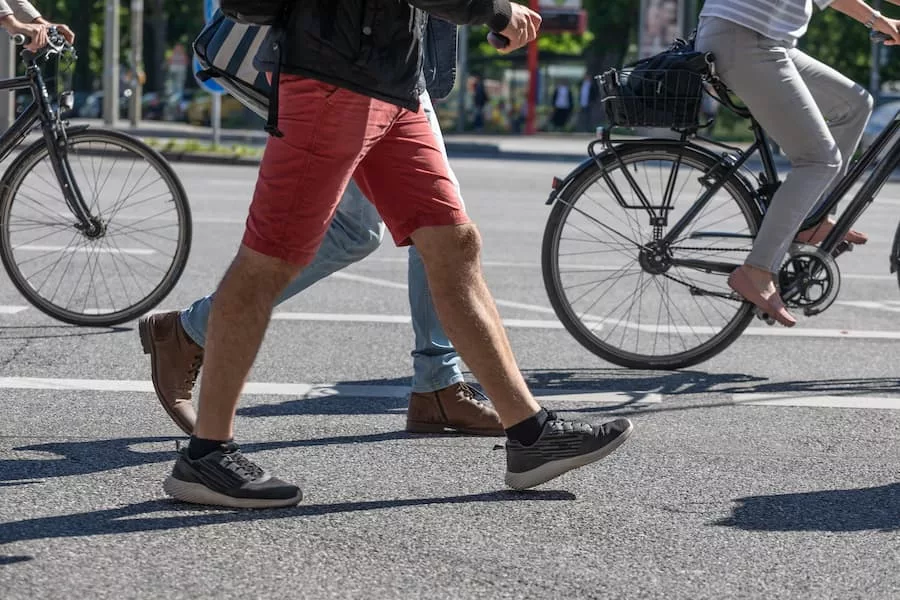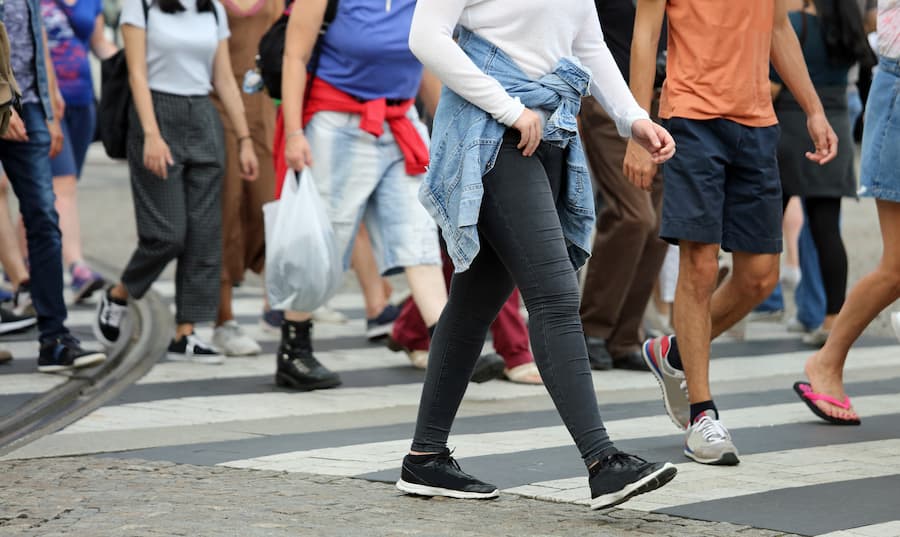What Are the Common Causes of Pedestrian Accidents?
Whether you prefer driving a car, riding a bike, or traveling by air or sea, everyone is a pedestrian at some point in their lives. And we’re rarely more vulnerable than when we’re navigating public spaces on foot. When we walk along sidewalks, cross the street, or stroll through parking lots, we are at risk for accidents that could cause serious bodily harm. That’s why it’s so important to understand the top causes of pedestrian accidents. For more information, reach out to a Miami pedestrian lawyer.
Common causes of pedestrian accidents, including where, when, and how these accidents are most likely to occur, appear below. We’ve included important laws and insurance rules that could apply to your situation if you get hurt in a pedestrian accident in Florida.
National, State, and Local Pedestrian Accident Facts and Statistics
The following data from the Centers for Disease Control and Prevention (CDC) and the National Highway Traffic Safety Administration (NHTSA) illustrate just how common and deadly pedestrian accidents are nationwide:
- In one recent year, more than 7,000 pedestrians died in U.S. traffic accidents with motor vehicles, or roughly one pedestrian death every 75 minutes.
- Of all the people who died in U.S. accidents in one recent year, one in six were pedestrians.
- Pedestrians also made an estimated 104,000 visits to emergency departments nationwide due to nonfatal crash injuries in one recent year.
- Alcohol consumption, driver speed, and location were all key risk factors in pedestrian accidents that year.
- Approximately one in ten pedestrian accident fatalities in one recent year were from crashes involving drivers with blood alcohol concentrations (BACs) over the legal limit.
- Drivers who traveled at higher speeds were more likely to cause pedestrian accidents, and those accidents were more likely to result in severe injuries.
- Most pedestrian accident fatalities that year occurred in urban areas, on open roads away from intersections, and at night.
- Older adults and children are at higher risk for fatal pedestrian accidents than other age groups. In one recent year, adults 65 and older accounted for 20 pedestrian deaths nationwide, and one in five children under 15 who died in traffic accidents that year were on foot.
- Nearly one-quarter (23 percent) of all pedestrians who were in fatal traffic accidents in one recent year died in crashes involving hit-and-run drivers.
Regrettably, things aren’t much better for pedestrians here in the Sunshine State. According to the NHTSA and the Florida Department of Highway Safety and Motor Vehicles (FLHSMV):
- In one recent year, there were 8,117 pedestrian crashes throughout the state of Florida.
- The 8,117 pedestrian accidents that occurred in Florida throughout 2020 represented 2.3 percent of all crashes (341,399) that occurred statewide that year.
- In one recent year, Florida had the second-highest number of pedestrian fatalities (696) in the U.S., behind only California (986), which has nearly twice as many residents.
- That year, pedestrians accounted for 20.9 percent of all traffic fatalities in Florida, a significantly higher rate than the national average (17 percent).
On a more local level, pedestrian accidents are a significant problem for residents and visitors in Miami as well.
Per the FLHSMV, the Miami-Dade Department of Transportation, and the Sun Sentinel:
- In one recent year, 1,221 pedestrian accidents in Miami-Dade County resulted in 960 pedestrian injuries and 84 pedestrian fatalities.
- Over the past ten years, the metro area between Fort Lauderdale and Miami ranked as the 13th most dangerous area for pedestrians in the U.S.
- During that time, there were 1,675 pedestrian accident fatalities in South Florida or 2.8 pedestrian deaths for every 100,000 South Florida residents.
- In one recent year, Miami-Dade reported 85 pedestrian accident fatalities.
Common Causes of Miami Pedestrian Accidents
Every pedestrian accident is different, but many stem from a handful of contributing factors that all boil down to driver negligence.
Some of the top causes of pedestrian accidents here in Miami are:
- Distracted driving. Drivers who focus too much on texting, eating, or other distracting behaviors don’t have their full attention on the road, so they’re more likely to overlook pedestrians and cause pedestrian accidents.
- Driving under the influence. When drivers consume alcohol or certain drugs and then get behind the wheel, they are more likely to cause pedestrian accidents due to impaired judgment, reaction time, depth perception, and mood regulation.
- Speeding. Drivers who exceed posted speed limits or drive too fast for present road conditions have less room for error, and they’re more likely to cause pedestrian accidents when they fail to react in time.
- Reckless driving. When drivers engage in reckless behaviors like tailgating or lane weaving, they are less likely to notice pedestrians in their surroundings and more likely to crash.
- Aggressive driving. In Florida, aggressive drivers commit moving violations that could endanger property or people. For instance, an aggressive driver might strike a pedestrian while running a stop sign or ignoring railroad crossing signals.
- Failure to yield. Some drivers forget or refuse to yield the right of way at crosswalks and other designated pedestrian paths. This illegal and unpredictable behavior can easily lead to pedestrian accidents.
- Other driver errors. Drivers who are young, inexperienced, or simply confused are more likely to commit dangerous driving errors that increase the risk of pedestrian accidents, such as running red lights or failing to signal a turn.
- Backing-up accidents. Backing-up accidents occur when careless drivers reverse out of driveways, garages, or parking spaces and strike passing pedestrians in the process.
- Dooring accidents. Dooring accidents occur when vehicle occupants open their car doors without looking and fling them into the paths of passing pedestrians, possibly causing blunt-impact injuries.
- Mechanical failures. If a car manufacturer designs a faulty component or a driver fails to keep their vehicle in good condition, mechanical failures can result in a loss of driver control and subsequent pedestrian accidents.
- Poor road conditions. When local governments fail to keep local roads in good shape, pedestrian accidents might occur due to poor road conditions like large potholes, improper drainage, or missing traffic signs.
Laws That Apply to Pedestrian Accident Cases in Florida
In the interest of preventing pedestrian accidents, Florida law imposes these rules on pedestrians and drivers who travel near pedestrians:
- Pedestrians must obey all official traffic control devices that apply to pedestrians unless a police officer specifically directs otherwise.
- When sidewalks are available, pedestrians must not walk on paved roadways that are for vehicular traffic unless it is absolutely necessary.
- When sidewalks are unavailable, pedestrians walking along paved roads must walk along the shoulder of the left-hand side of the road, facing oncoming traffic.
- Pedestrians must not stand on paved roads to solicit rides, employment, or business from vehicle occupants.
- Drivers approaching intersections with traffic control devices must stop before entering crosswalks and remain stopped to allow pedestrians to cross.
- Pedestrians must not suddenly leave curbs or other places of safety and dart into the paths of oncoming vehicles that are too close for the drivers to yield.
- When drivers stop their vehicles at crosswalks to allow pedestrians to cross, drivers approaching from behind must not overtake and pass the stopped vehicle.
- Pedestrians who cross the road at unmarked crosswalks or at any points other than marked crosswalks must yield the right of way to vehicular traffic.
- Pedestrians must not cross intersections diagonally unless they receive express authorization from official traffic control devices or police officers.
- Drivers must exercise caution to avoid colliding with pedestrians and give warnings when necessary. Drivers must also be extra cautious around pedestrians who are children or who are obviously confused or incapacitated.
- Drivers must maintain a maximum speed limit of 30 miles per hour in business or residential districts unless local authorities set lower maximum speed limits.
In addition to these traffic rules, the following Florida laws might apply to your situation if you want to file an insurance claim or personal injury lawsuit after a pedestrian accident:
- Florida’s no-fault auto insurance law. Florida is one of a handful of states that follows a no-fault insurance system for accident injury claims. If you get hurt in a pedestrian accident in Florida, you must file your initial insurance claim with your own auto insurance provider. The same personal injury protection (PIP) insurance coverage that protects you if you crash while driving your car also kicks in if you get hurt in a crash as a pedestrian. No matter who is at fault for an accident, your PIP coverage pays for 80 percent of your medical expenses and 60 percent of your wage losses, up to the limits of your policy. But remember that the no-fault system prohibits you from filing an insurance claim against the driver who hit you unless you sustain a severe injury, meaning one that results in significant or permanent disability or disfigurement.
- Florida’s comparative negligence law. If you are partially at fault for the accident, Florida’s comparative negligence law could come into play. Under this law, you can still recover compensation from the driver who hit you, but the amount of money you could receive will decrease based on how much your actions contributed to the accident. Technically, the law applies only to lawsuits, with the court serving as fact-finder and apportioning fault to each party. However, it affects insurance claims, too, as adjusters base their decisions on what they think would happen in court.
- Florida’s statute of limitations law. If you need to file a lawsuit after a pedestrian accident, Florida’s statute of limitations law gives you just four years to do so. This four-year window starts on the date when the accident occurs. That means you have four years from the date you get hurt to sue the at-fault party for compensation. If you wait too long to file your lawsuit, the driver who hit you will likely ask the court to dismiss your case, and the court will probably agree. If the court dismisses your case, you would effectively lose your right to demand compensation in court for your injuries. That’s why getting help from a knowledgeable lawyer as soon as possible after a pedestrian accident is essential.
Traffic Safety Tips for Drivers

Here are some traffic safety tips that drivers must follow to stop pedestrian accidents before they happen:
- Always keep an eye out for pedestrians, even when you’re not in residential areas. Take extra care around pedestrians who are children or who appear to be blind, elderly, or confused.
- Take extra precautions when driving in conditions with low visibility, such as at night and when it’s raining, snowing, or foggy.
- Slow down and prepare to stop any time you approach a crosswalk. Always yield to pedestrians in crosswalks.
- Stop well before you reach a crosswalk if a pedestrian is crossing the road, so it’s easier for other drivers to see the pedestrian and stop in time.
- Never pass other vehicles that have stopped at a crosswalk.
- Never drive under the influence or while engaging in distractions.
- Follow the speed limit, especially in school zones and neighborhoods, and be careful when driving in reverse.
- Take extra precautions around railroad crossings where you might find pedestrians.
For more information, reach out to a Miami personal injury lawyer.
Related articles
Related articles Related articles Related articles Related articles Related articles Related articles Related articles Related articles Related articles Related articles
Pedestrian Accident
15 May 2023
How Long Do Pedestrian Accident Claims Take To Settle?
Pedestrian Accident
12 May 2023
Can a Pedestrian Be at Fault For a Car Accident?





